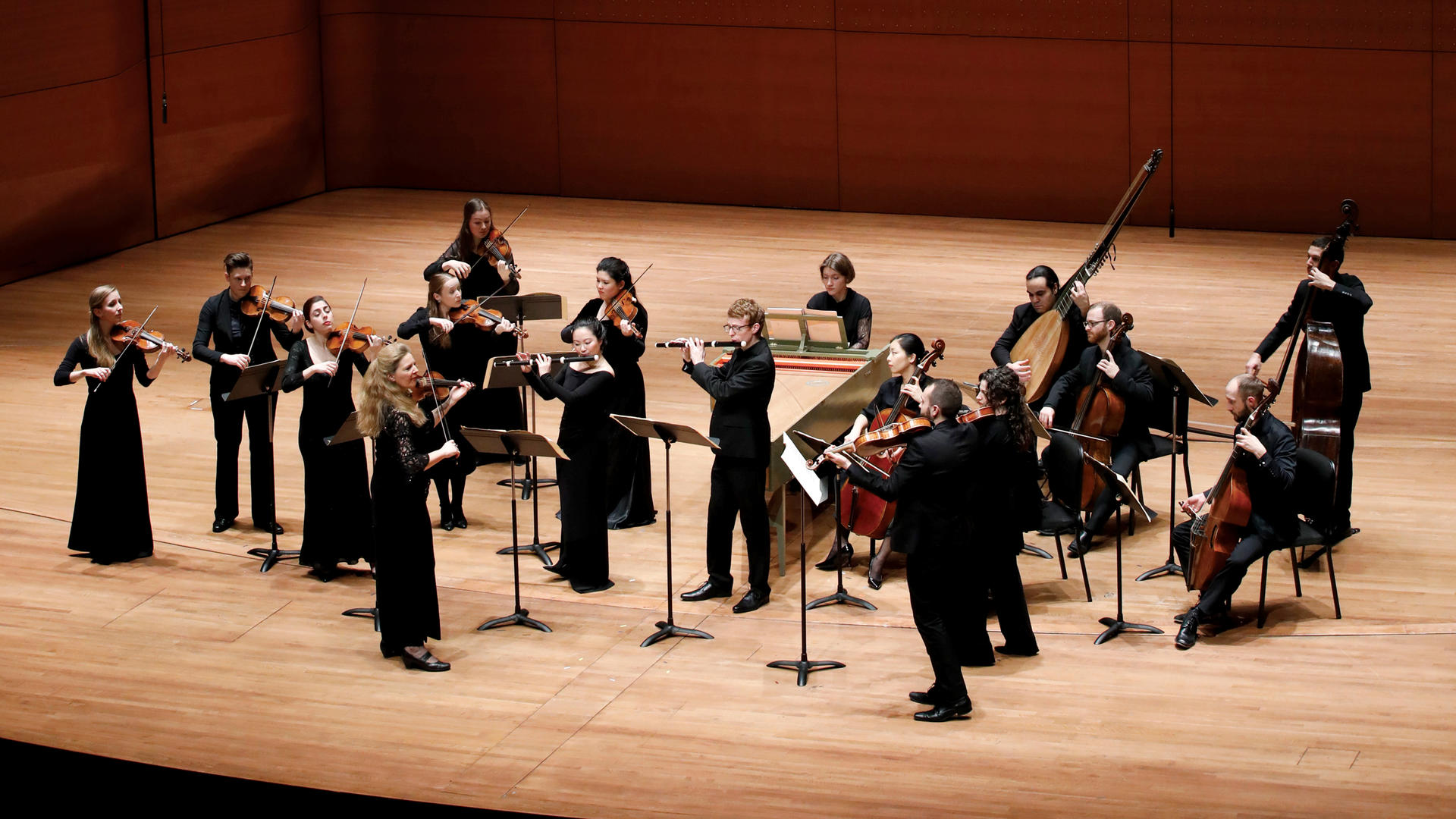
Showcasing the Cosmopolitan Splendor of the Baroque Orchestra
“A good program entertains and moves the listener,” according to baroque violinist Rachel Podger, who curated and will lead Juilliard415’s March 29 Alice Tully Hall performance and an identical one two days earlier in Kingston, Ontario. She’s selected works for these concerts that showcase the cosmopolitan splendor of the baroque orchestra. “A lot of the focus is on variety and how to engage with the listener. You’re looking for differences in instrumentation to evoke varying textures and colors, different national styles, different types of pieces, as well as different keys and characters,” Podger was emailing the Journal from Norway, where she was on tour.
Podger’s program reflects the sophisticated outlook of the composers, who were among the digital nomads of their day. Veracini was a Florentine violinist who spent time in London, Germany, and Prague. Vivaldi, a Venetian, drew influence from composers who visited his city; and Locatelli, from Lombardy, settled in Amsterdam after touring Germany. Bach, while spending his life within Germany, adapted French and Italian styles into his own language. And German-born Handel lived in Italy before settling in London, “causing both countries to compete and claim him as their own,” Podger said.
The cosmopolitan tradition is as familiar to Podger as the repertoire. Half-English and half-German, she studied at London’s Guildhall School of Music and Drama, and her musician parents performed with John Eliot Gardiner and the Monteverdi Choir in its earliest days. “As a toddler I would apparently move and dance around to Bach when it happened to be playing at home and cry when it finished,” she said.
Though Podger studied modern violin, she was enthralled by the intoxicating expressivity of its baroque counterpart. “The sound of gut strings was the main thing I found attractive about historical performance at first; such a different sound to that of modern instruments with wound and steel strings, and such a different way of producing the sound; I was mesmerized and found it very expressive,” Podger recalled. Though when she finally had a chance “to try out a baroque violin with gut strings I realized it wasn't a walk in the park and needed figuring out! I started listening to ensembles and players and singers who specialized in baroque style and was smitten by it all and immersed myself in all aspects of it.”
Each of the program’s works features the 18th-century ardor for dramatic aesthetics. In his Orchestral Suite No. 1, Bach “masterfully takes the form of the French suite and makes it his own, weaving complexity into the structure; the exhilarating fugue of his first suite exposes long lines for busy oboes and bassoon, and the dances that follow engage the listener fully with their rich inner parts, complex imitations and rhythmic vigor,” Podger noted. “Handel, the master of a fanciful tune, is in Italian mode but as ever brings a German ‘earthy’ sound” to his Opus 3 Concerto grosso in B-flat Major.
And the drama isn’t limited to the music. The program opens with Veracini’s Ouverture No. 1 in B-flat Major, which premiered in 1716 in Venice to the delight of the future Elector of Saxony, who encouraged the notoriously arrogant violin virtuoso to return with him to Dresden. There, Veracini’s stint as Kapellmeister was marred by intense rivalries with other violinists and his dramatic, though not fatal, leap out of a second-story window.
Pietro Locatelli, whose Concerto for Four Violins is on the Juilliard415 program, was known for his delight in pyrotechnics—he wasn’t called “the Paganini of the 18th century for nothing,” Podger said. Prior to his move to Amsterdam, in 1729, Locatelli performed in Kassel, Germany, where Podger spent her childhood. “I sang regularly in a church choir and was part of many Lutheran church services singing Bach cantatas on Sundays, and I sang Bach’s B Minor Mass, Christmas Oratorio, and the Passions as a teenager. Later on when playing the violin part, I knew the music from a singing point of view, which proved very helpful for breathing, phrasing, and leading an orchestra.”
Simultaneously leading and performing is “an exhilarating experience but not without its challenges,” Podger said. “As a player and director, you are a facilitator as well as a performer. Most of the work happens during the rehearsals and preparation so during the performance you have more freedom to concentrate on your playing, having guided your fellow musicians to shape the musical lines. Encouraging and engaging with the other performers is of course key during a performance, as that in turn engages and inspires them to express as much as possible and play with a sense of freedom.”
First-year baroque bassoonist Georgeanne Banker holds a Historical Performance scholarship